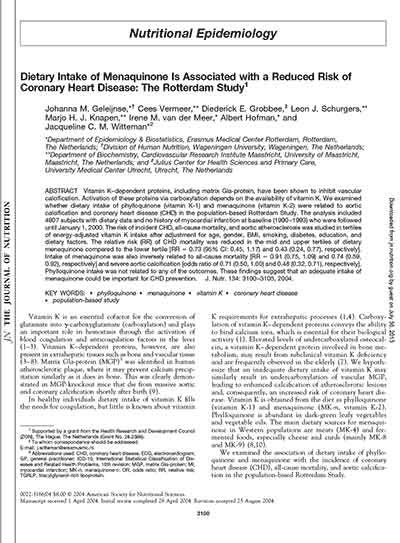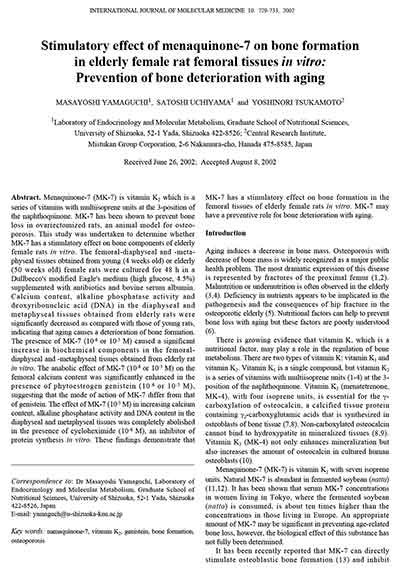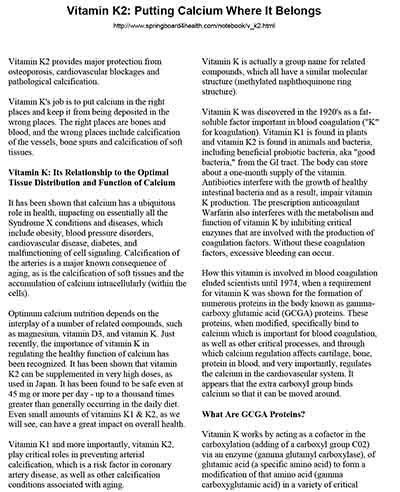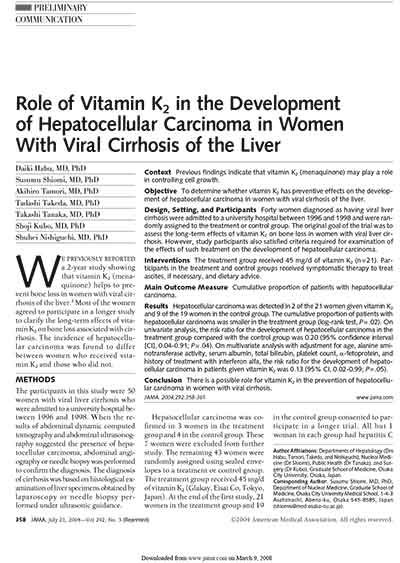Matrix Gla-protein: The calcification inhibitor in need of vitamin K
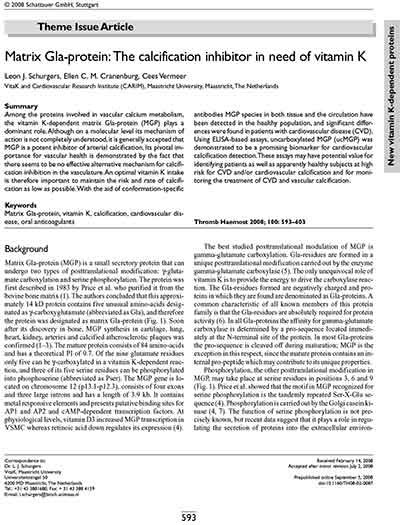
Matrix Gla-protein: The calcification inhibitor in need of vitamin K
Summary
Among the proteins involved in vascular calcium metabolism, the vitamin K-dependent matrix Gla-protein (MGP) plays a dominant role.Although on a molecular level its mechanism of action is not completely understood,it is generally accepted that MGP is a potent inhibitor of arterial calcification. Its pivotal importance for vascular health is demonstrated by the fact that there seems to be no effective alternative mechanism for calcification inhibition in the vasculature.An optimal vitamin K intake is therefore important to maintain the risk and rate of calcification as low as possible.With the aid of conformation-specific antibodies MGP species in both tissue and the circulation have been detected in the healthy population, and significant differences were found in patients with cardiovascular disease (CVD). Using ELISA-based assays, uncarboxylated MGP (ucMGP) was demonstrated to be a promising biomarker for cardiovascular calcification detection.These assays may have potential value for identifying patients as well as apparently healthy subjects at high risk for CVD and/or cardiovascular calcification and for monitoring the treatment of CVD and vascular calcification.
Source:Thromb Haemost. 2008 Oct;100(4):593-603. https://www.ncbi.nlm.nih.gov/pubmed/18841280<>



